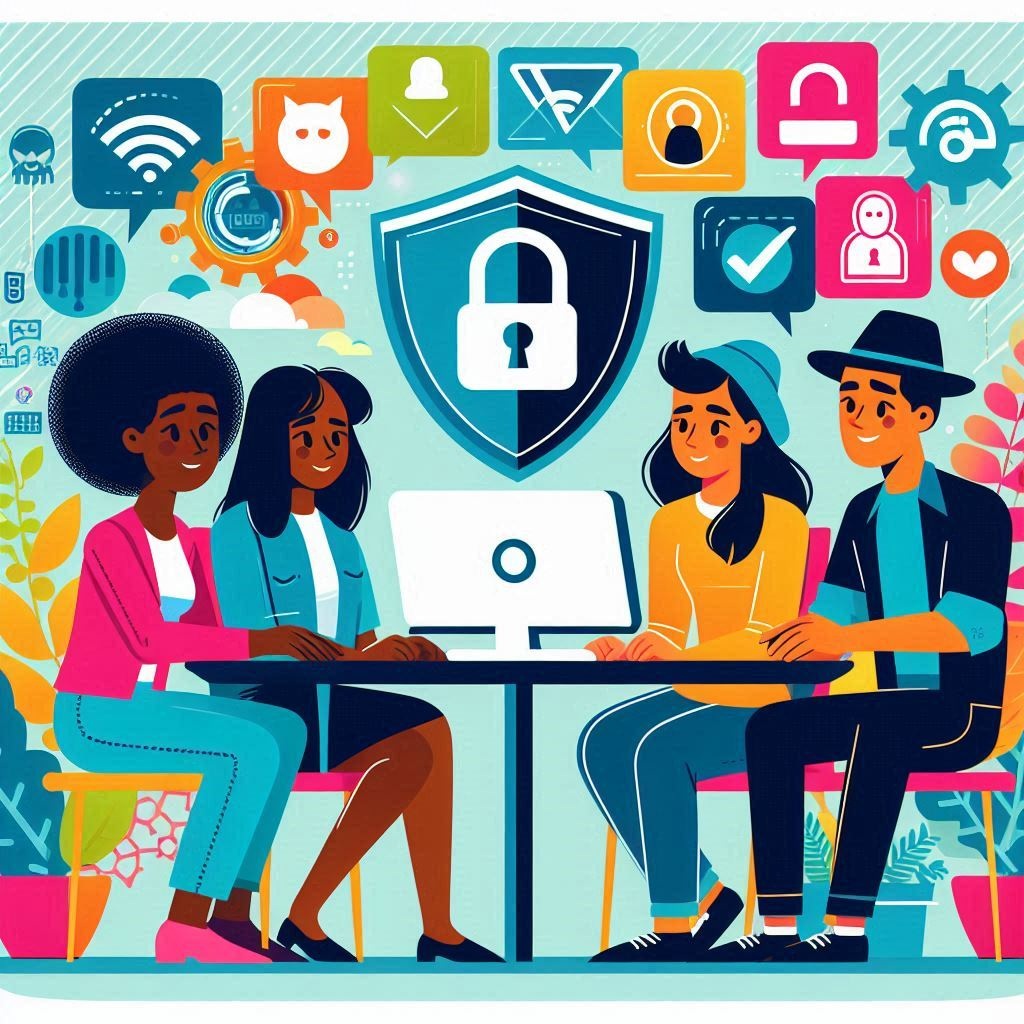Introduction
Digital Safety Against Phishing have developed into extremely sophisticated hazards that seriously endanger people and businesses in an ever-linked digital terrain. These cyberattacks use many misleading strategies meant to fool victims into revealing private identity data, login passwords, and financial data—sensitive information. Falling for phishing may have disastrous effects on finances, result in identity theft, and cause disturbance of corporate activities.
Phishing attempts are not just an annoyance; they are a widespread problem that uses human shortcomings instead of depending only on technological flaws. Often posing as reputable organizations—such as banks or well-known businesses—cybercriminals build urgency that drives victims to respond fast without checking the validity of the request. Attackers could, for example, send messages or emails seeming to be real, guiding people to bogus websites meant to gather their sensitive data.
Safeguarding online security depends on knowing preventative techniques considering the frequency and possible effects of phishing attempts. Companies have to put strong security policies into place, including sophisticated threat detection tools and staff training courses meant to identify phishing efforts. Individuals and companies may greatly lower their chances of falling victim to these malevolent cyberattacks by encouraging awareness and alertness in their culture.
1. Create an awareness foundation
One of the top digital safety against phishing One starts phishing prevention with awareness. Cybercriminals pressure receivers to respond fast without thinking, hence generating urgency in their communications. They could pass for reputable companies like banks, social media, or even coworkers. Learning to identify these strategies helps you strengthen your resistance against such deceptive efforts. Search for obvious indicators, including generic greetings, spelling mistakes, and dubious sender addresses that don’t quite match approved domains.
2. Update Your Email Security Arsenal
Second digital safety against phishing is prevention of phishing attempts depends critically on email security. Although built-in spam filters abound in modern email applications, they shouldn’t be your only line of protection. On all of your accounts—especially for email services—enable two-factor authentication. This extra security layer guarantees that even should attackers find your password, they cannot access your accounts without a supplementary verification process. Frequent password changes using strong, distinctive combinations for every account improve your security posture even further.
3. Perfect the Art of URL Verification
Third, digital safety against phishing is URL verification, which is among phishing prevention’s most important components. Many times, cybercriminals utilize URLs that seem trustworthy at first look but include little misspellings or variances. Hover over every link to verify the real destination URL before clicking any one. Search for safe website indications in your browser, including “https://” and the padlock symbol. Should you be uncertain about a link, manually enter the known website URL into your browser rather than clicking the given link.
4. Make ongoing security education investments.
The fourth digital safety against phishing is foundation of strong phishing avoidance techniques is training and education. Regular security awareness campaigns teaching staff members about current phishing methods and best practices should be carried out by firms. To enable employees to spot and handle dubious communications, these initiatives should include hands-on exercises, including simulated phishing efforts. Frequent updates and refresher training let everyone remain current on changing hazards.

5. Apply strong technical safeguards.
The fifth digital safety against phishing: Technical security offers yet another vital layer of defense against phishing attempts. By installing and maintaining current antivirus software, email filters, and online surfing security technologies, you may help find and prevent harmful material before it reaches users. To guarantee you’re protected against the most recent dangers, turn on automatic updates for any security program. To create and safely save complicated passwords, consider utilizing a password manager, which will lower the credential breach risk.
6. Create strong verification systems.
The sixth digital safety against phishing: Handling sensitive material should make verifying processes second nature. Verify an unexpected demand for personal data or financial information by means of another channel of contact. If your bank emails you asking for action, for example, contact the bank’s official number or visit a local branch rather than answering the email directly. Many effective phishing efforts may be stopped with only one easy action.
7. Establish a Multi-Layered Security System
The seventh digital safety against phishing: Approaches with several layers of security provide the best defense against phishing. This covers keeping current spam filters, employing safe email gateways, and using DMARC (Domain-based Message Authentication, Reporting, and Conformance) systems for email authentication. Companies should also consider using AI-powered security technologies that can identify and stop advanced phishing efforts based on behavioral patterns and past data.
8. Create a contingency response strategy.
The eighth digital safety against phishing: Just as prevention is vital, so is response preparation. Clearly define how you handle security event response and suspected phishing attempts. Should a phishing effort be successful, a quick response may reduce harm. Provide easily accessible contact details to pertinent security teams, IT support, and financial institutions that may need to be informed in the event of a breach.
9. Execute Frequent Security Evaluations
The nineth digital safety against phishing: Frequent security audits assist find flaws in your approach to phishing avoidance. Review security policies on a regular basis; change rules as necessary; keep current on fresh phishing methods and countermeasures. This proactive strategy guarantees that your defenses keep working against changing hazards.
Conclusion
Stopping phishing attempts calls for constant awareness and proactive adaptation to fit cybercrime’s constantly changing strategies. Individuals and companies should keep updated on the most recent dangers, as these malevolent players are continuously improving their techniques to bypass security systems and take advantage of human nature.
Strong security policies are very necessary to properly reduce the chance of phishing and victimizing oneself. This includes routinely upgrading software and security systems to guard against vulnerabilities, employing sophisticated, unique passwords for many accounts, and, when feasible, two-factor authentication. Furthermore, encouraging a security consciousness culture within your company would help your defenses to be much strengthened. Frequent training courses may provide staff members with the skills to identify phishing attempts and react correctly.
Moreover, everyday practice of security awareness is rather important. Urgent communications, particularly those that demand sensitive information or generate a feeling of urgency, should make your team and you dubious of unwanted messages. One of the most important lines of protection is relying on your instincts when something seems odd. Including these techniques into your regular life can help you build a strong defense against phishing attempts, therefore preserving your digital security and safeguarding important personal and business information.




